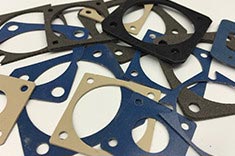EMI Shielding Products
- Custom Gasket Fabrication
- Connector Gaskets
- Bonded O Ring
- Custom Gaskets
- Conduct-O-Knit Knitted Wire Mesh
- Conduct-O-Seal Combo Gasket
- Conduct-O-Elastomer
- Conduct-O-Seal Oriented Wire in Silicone Gasket Material
- Conduct-O-Mesh Tape
- Conduct-O-Foam
- Conduct-O-Bond
- Optical Filters For Electronic Displays
- Shielded Vent Panels
- ESC Board Level Shielding
- 300 Series
RF Interference: Categories and Symptoms

Radio Frequency (RF) interference is an issue that can significantly disrupt wireless communications or equipment operations. Often, it occurs when different radio signals interfere with each other, leading to a breakdown or complete failure of communication. Integrating RF shields in devices is the best way to combat issues arising from RF interference.
Symptoms of RF interference can be subtle yet problematic. These include being unable to communicate in areas where there's typically good coverage or experiencing issues with reliable base radios or repeaters. You may also find that multiple communication devices across multiple bands become unresponsive. In addition, significant loss of functionality in GPS systems or improvement in communication when moving away from a specific area (dead zone) could point towards RF interference.
Internal or self-interference is one of the main categories of RF interference. This type of interference occurs when an organization's own devices unintentionally interfere with its internal communications. Modern electronics are often composed of smaller electronics that work together, so RF shielding is even more critical now than it was 20 to 30 years ago.
Internal interference can arise from the improper setup or incorrect configuration of communication equipment. It can occur right after upgrading equipment, adding new network devices, or altering existing configurations. Testing is essential to minimizing manufacturing and user problems, which can be costly to fix in later stages. Proper setup and configuration of equipment are vital in dealing with internal interference. If the issue persists, technical support or expert advice may be required to pinpoint and resolve the problem.
RF interference can significantly disrupt communication systems, but understanding its categories and symptoms can help manage these issues effectively. The U.S. Government continues to work on initiatives aimed at reducing RF interference and enhancing wireless communication systems' security and reliability.



